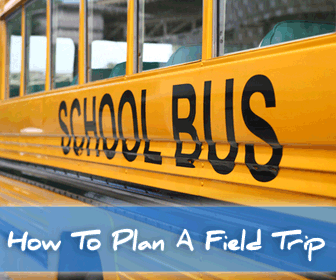5 Tips for Making the Most of Your Field Trip


Field trips can be invaluable to English as a second language students if they are focused, thought out and planned well. To include these types of field trips in your semester’s plans, read on.
Choosing the Field Trip
As valuable as field trips are, you should not include them in your plans for the semester just for the sake of checking one particular activity off your syllabus. Wherever you take your students, you should have a deeper purpose than just getting out of the classroom. Do you want your students to have exposure to culture? Are you looking to improve their conversations skills? Do you need to focus on listening skills? The answers to these questions are important if you want to choose the best location or event for your class.
Once you have thought about your purpose and a potential destination, talk to the administration at your school for regulations regarding field trips. Some schools have restrictions for field trips: whether or not you can transport students, what budget is allotted for field trips, and how far you are allowed to travel, to name a few. Make sure you have all these specifications clear in your mind before proposing a field trip to your administration or giving your students any indication that you will be going on location.
Not only that, before you take fifteen energetic students to a new place, be sure to visit it yourself. This way you can make sure the location fulfills all of your expectations and will meet your students’ language needs. In addition, you will know what the best activities for your students will be and if ther are any attractions you may want to avoid.
Planning the Trip
The logistics in planning a field trip can seem overwhelming, especially if you have not done it before. You can rest easy if you take your tasks one at a time and make sure you think them all through. Here are the items that should be on your to do list.
Preparing Your Students
To get the most out of your trip, make sure your students know the goals for their time outside the classroom. If they know your hopes and expectations for the trip, they are more likely to be aware throughout the day. You should also take the opportunity to review any specific vocabulary they may encounter on location. You can give your students some advance knowledge by looking at websites or promotional material from the location you will be visiting. If you took pictures on your preview trip there, you may want to show them as well.
Take a few minutes to explain to your students the expectations you have for them. You should communicate not only the activities you want them to do but also the level of behavior that is appropriate to the location and for your school’s reputation. You should also review what assignments your students have to complete while on the trip and give them the schedule before you leave. Make sure your students understand that this trip should be both fun and educational and that you hope they achieve both.
Get Ready to Go
When the day of adventure finally comes, make sure your students are prepared. Give everyone a nametag and a class buddy. You may also choose to assign particular groups of students to specific chaperones. That way everyone will have some accountability from both peers and parents. Look at your list of equipment to make sure you have everything ready to go, and collect lunches from your students after they have put their names on them. You should also have some extra items along for those who may have forgotten their lunch, just be extremely cautious of food allergies.
Most teachers do not get many opportunities to take their class on location for studies, so have fun and encourage your students to do likewise.